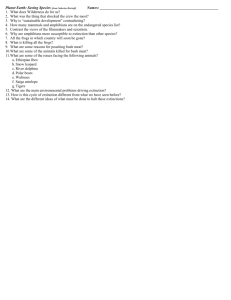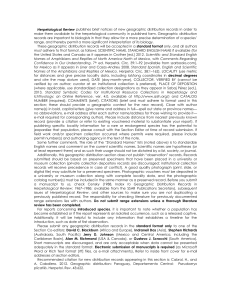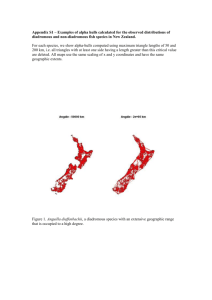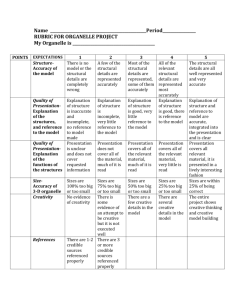Ecological Determinates of Geographic Range Size in North
advertisement
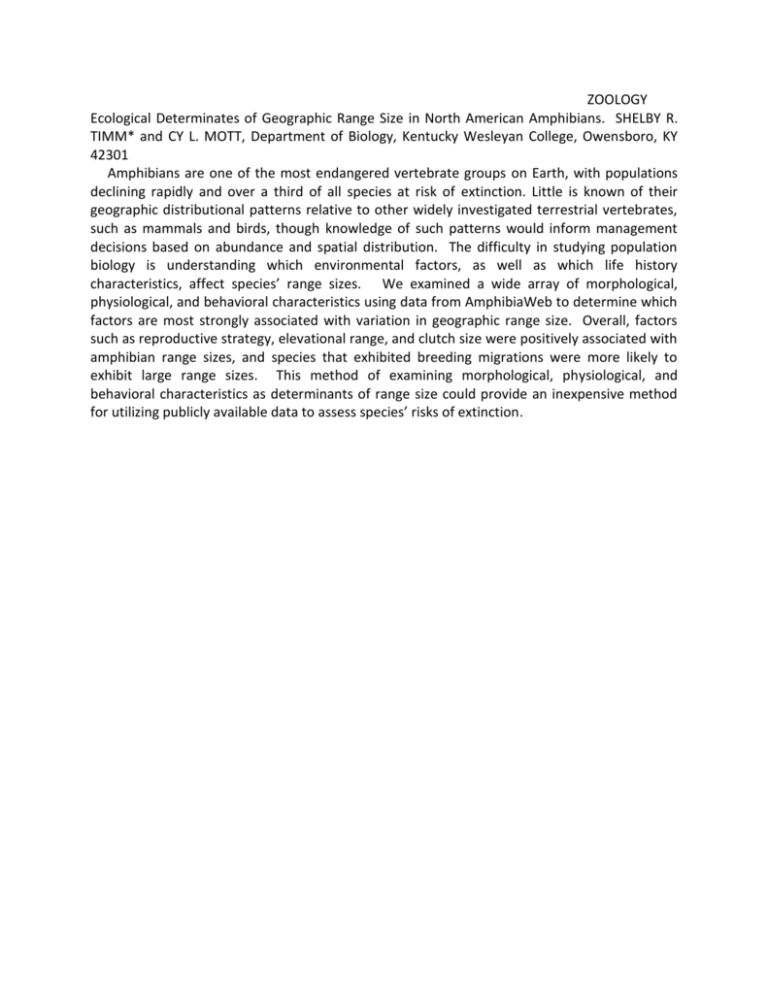
ZOOLOGY Ecological Determinates of Geographic Range Size in North American Amphibians. SHELBY R. TIMM* and CY L. MOTT, Department of Biology, Kentucky Wesleyan College, Owensboro, KY 42301 Amphibians are one of the most endangered vertebrate groups on Earth, with populations declining rapidly and over a third of all species at risk of extinction. Little is known of their geographic distributional patterns relative to other widely investigated terrestrial vertebrates, such as mammals and birds, though knowledge of such patterns would inform management decisions based on abundance and spatial distribution. The difficulty in studying population biology is understanding which environmental factors, as well as which life history characteristics, affect species’ range sizes. We examined a wide array of morphological, physiological, and behavioral characteristics using data from AmphibiaWeb to determine which factors are most strongly associated with variation in geographic range size. Overall, factors such as reproductive strategy, elevational range, and clutch size were positively associated with amphibian range sizes, and species that exhibited breeding migrations were more likely to exhibit large range sizes. This method of examining morphological, physiological, and behavioral characteristics as determinants of range size could provide an inexpensive method for utilizing publicly available data to assess species’ risks of extinction.
